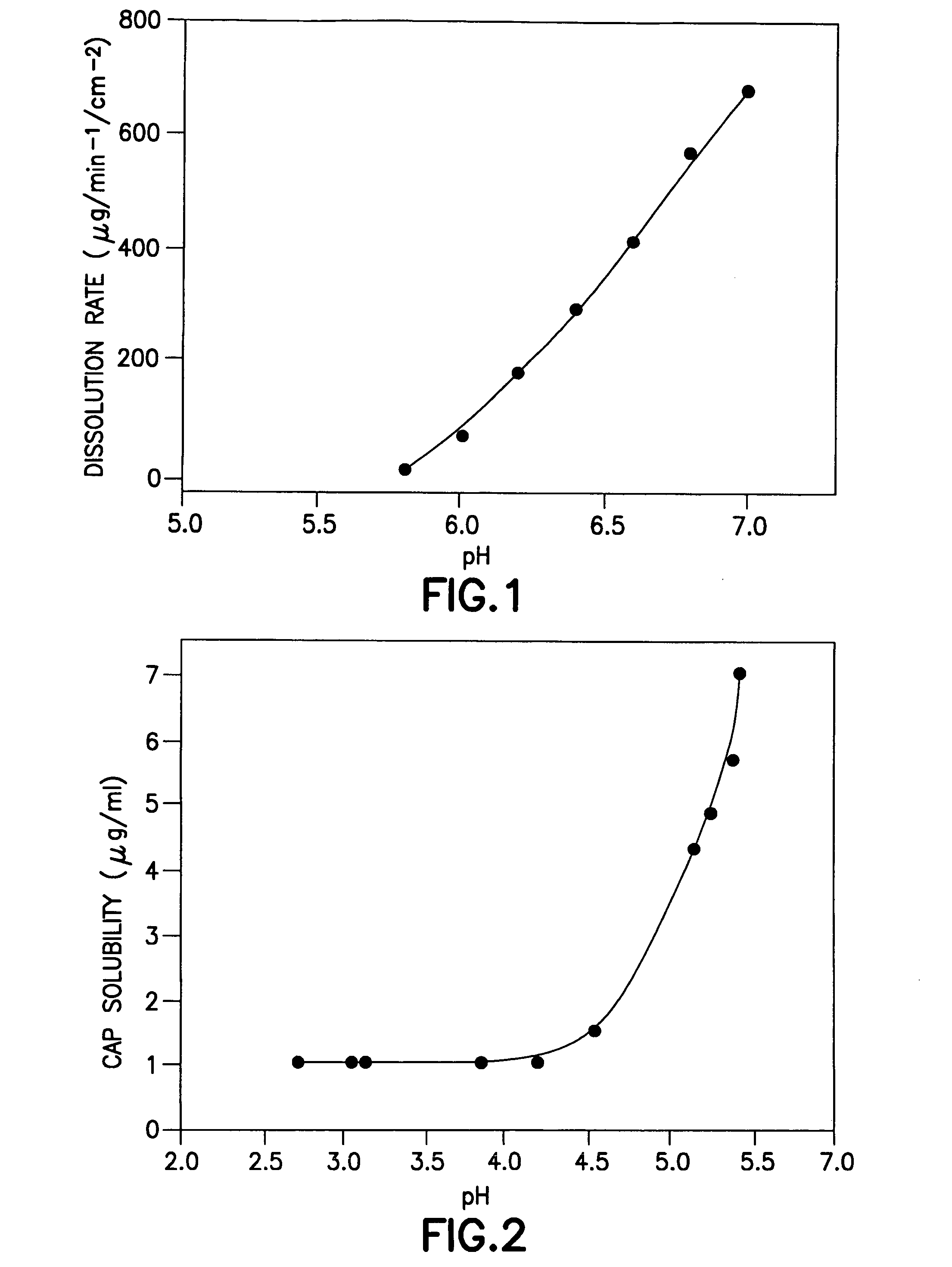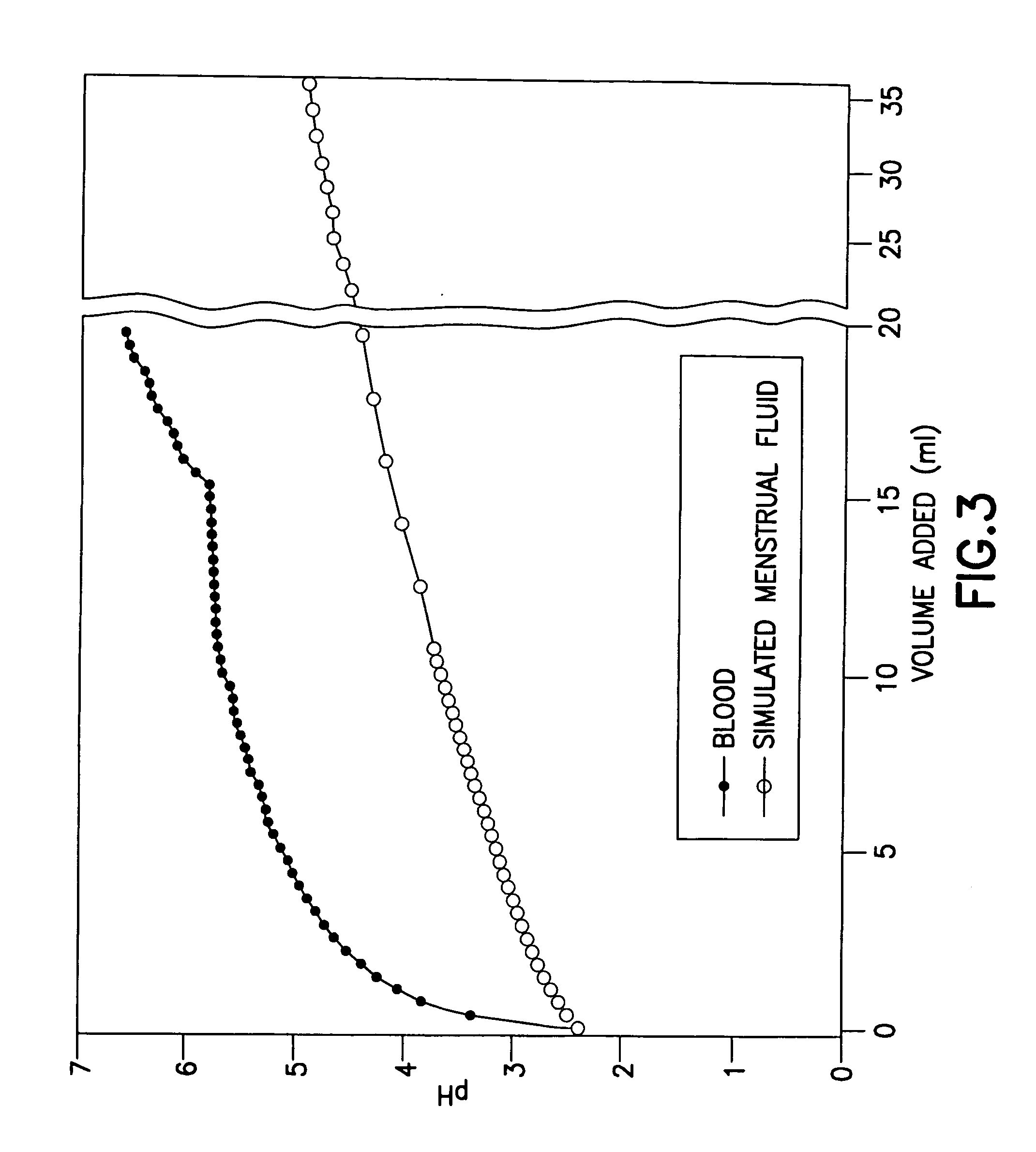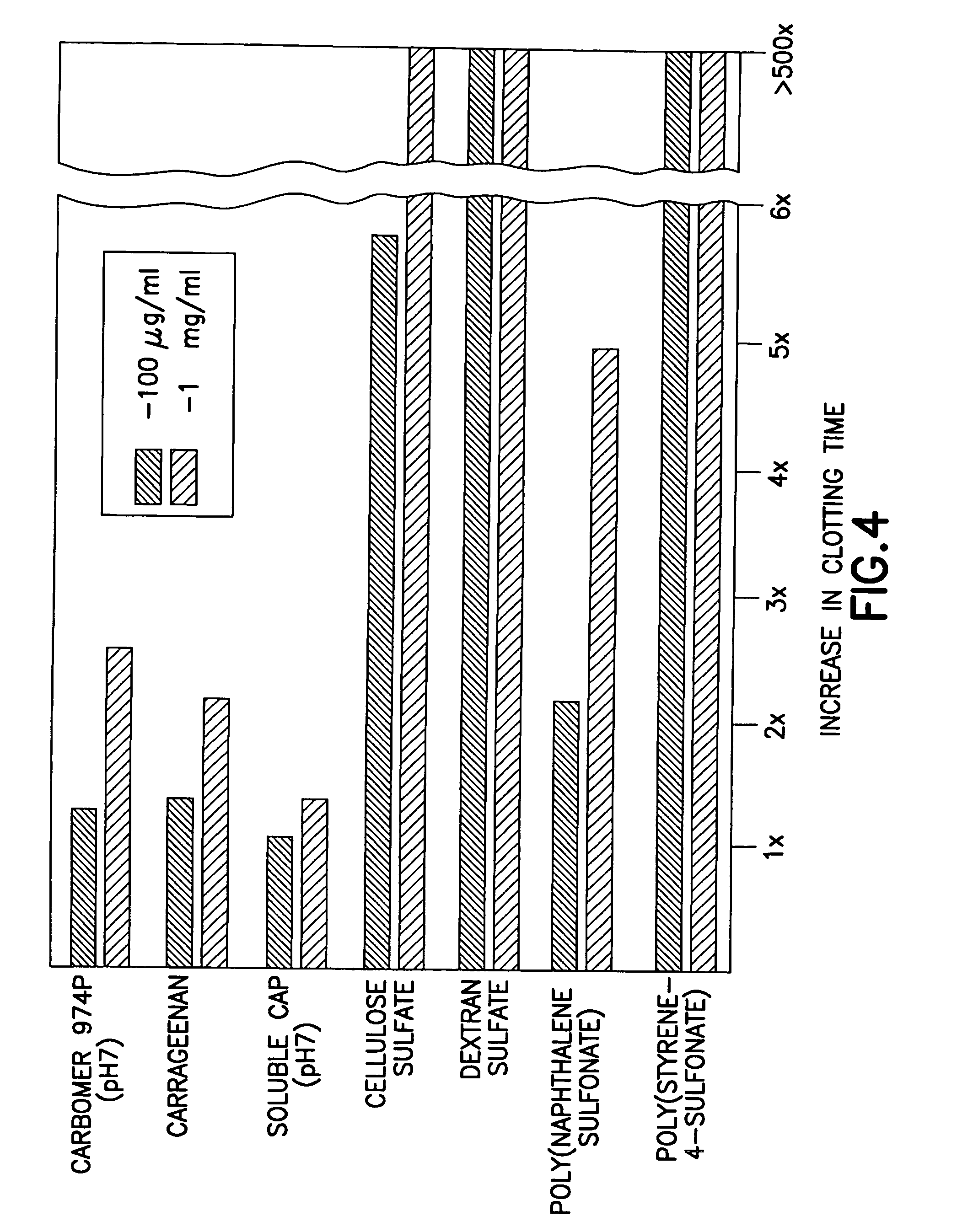Anti-infective hygiene products based on cellulose acetate phthalate
a technology of cellulose acetate and anti-infective hygiene products, which is applied in the field of anti-infective hygiene products based on cellulose acetate phthalate, can solve the problems of limited air available to tampons tested, not inhibiting cell growth, and causing toxin production, so as to prevent the propagation of staphylococcus
- Summary
- Abstract
- Description
- Claims
- Application Information
AI Technical Summary
Benefits of technology
Problems solved by technology
Method used
Image
Examples
example 1
Binding of HSV-2 to Micronized CAP (Aquateric®)
[0139] In order to investigate the adsorptive capacity of micronized CAP (=Aquateric®), graded quantities of this material (0.74 to 180 mg / ml) were added to a suspension containing 10 μg / ml of purified herpes virus type 2 (HSV-2) (Advanced Biotechnologies, Inc., Columbia, Md.) in 0.14 M NaCl containing 100 μg / ml of each bovine serum albumin (BSA) and gelatin, and mixed for 5 minutes at 37° C. The mixtures were put on ice, centrifuged at 10,000 rpm and the supernatant fluids were filtered through 0.45 μ filters which had been prewashed with 0.14 M NaCl containing 100 μg / ml of each BSA and gelatin. Dilutions of the supernatant fluid as well as dilutions of the original virus suspension were tested for the content of HSV-2 by an enzyme linked immunosorbent assay (ELISA). The dilutions were made in TRIS buffered saline (TBS) containing 1 wt / % of BSA and 0.25 wt. % of gelatin and 0.1 wt. % of TWEEN-20 at pH 7.2. The dilutions were added to ...
example 2
Lactobacilli Combinations
[0141]Lactobacilli were grown in the presence of micronized CAP. Surprisingly and unexpectedly, the Lactobacilli do replicate in the presence of micronized CAP. Thus, micronized CAP not only, does not affect the viability of Lactobacilli, but also provides an environment in which Lactobacilli can grow. Based on this surprising finding, micronized CAP can be combined with Lactobacilli to generate products maintaining and augmenting health by allowing colonization of mucosal sites by beneficial Lactobacilli and suppressing colonization by undesirable bacteria, which are also inactivated by the presence of micronized CAP.
[0142] Recent studies using solely a gene-based procedure and polymerase chain reaction (PCR) amplification, it was possible to precisely identify microbes in the vaginal epithelium of individual women (Hyman R W, Fukushima M, Diamond L, Kumm J, Giudice L C, Davis, R W, “Microbes on the human vaginal epithelium,” Proceedings of the National A...
example 3
Prevention of Toxic Shock Syndrome Toxin 1 (TSST-1) Production
[0144] Applicants designed experiments to determine whether incorporation of micronized CAP, and specifically of a CAP based dispersible film (Neurath A R, Strick N, Li Y Y, “Water dispersible microbicidal cellulose acetate phthalate film,” BMC Infect. Dis., 3:27 (2003), http: / / www.biomedcentral.com / content / pdf / 1471-2334-3-27.pdf, Neurath AR, Strick N, Li Y Y, “Water dispersible film,” US Pat. Application Publication No. 2005 / 0070501 A1 (published Mar. 21, 2005)), would result in tampons with improved properties inhibiting S. aureus and TSST-1 production. The corresponding experiments and their results are described below.
[0145] Commercially available OTC Tampax S+ and o.b. super tampons, respectively, wrapped into water dispersible CAP film (Neurath A R, Strick N, Li Y Y, “Water dispersible microbicidal cellulose acetate phthalate film,” BMC Infect. Dis., 3:27 (2003), http: / / www.biomedcentral.com / content / pdf / 1471-2334-...
PUM
| Property | Measurement | Unit |
|---|---|---|
| Volume | aaaaa | aaaaa |
| Fraction | aaaaa | aaaaa |
| Fraction | aaaaa | aaaaa |
Abstract
Description
Claims
Application Information
 Login to View More
Login to View More - R&D
- Intellectual Property
- Life Sciences
- Materials
- Tech Scout
- Unparalleled Data Quality
- Higher Quality Content
- 60% Fewer Hallucinations
Browse by: Latest US Patents, China's latest patents, Technical Efficacy Thesaurus, Application Domain, Technology Topic, Popular Technical Reports.
© 2025 PatSnap. All rights reserved.Legal|Privacy policy|Modern Slavery Act Transparency Statement|Sitemap|About US| Contact US: help@patsnap.com



